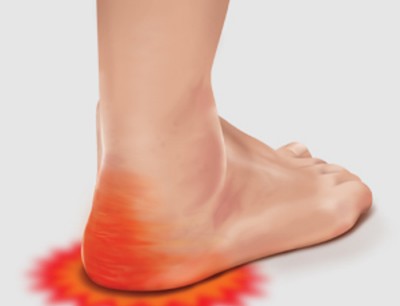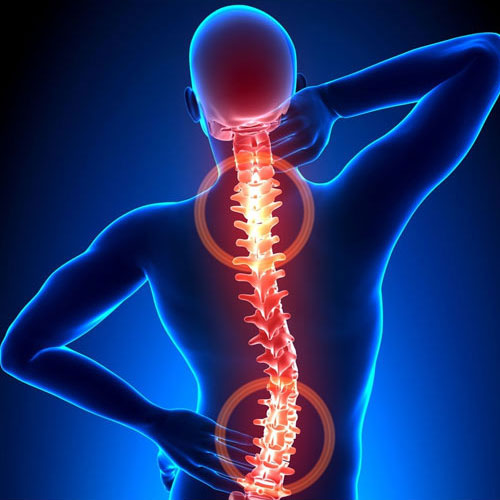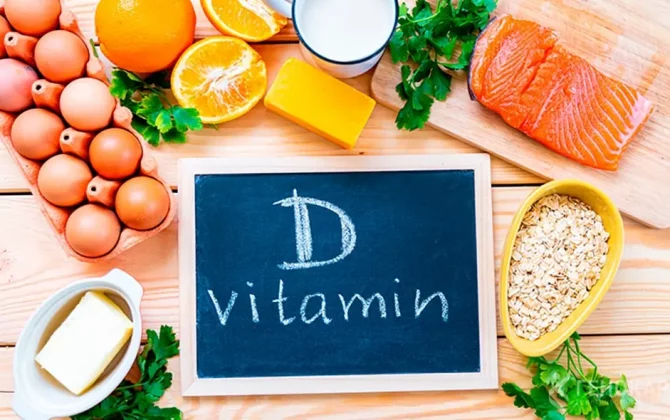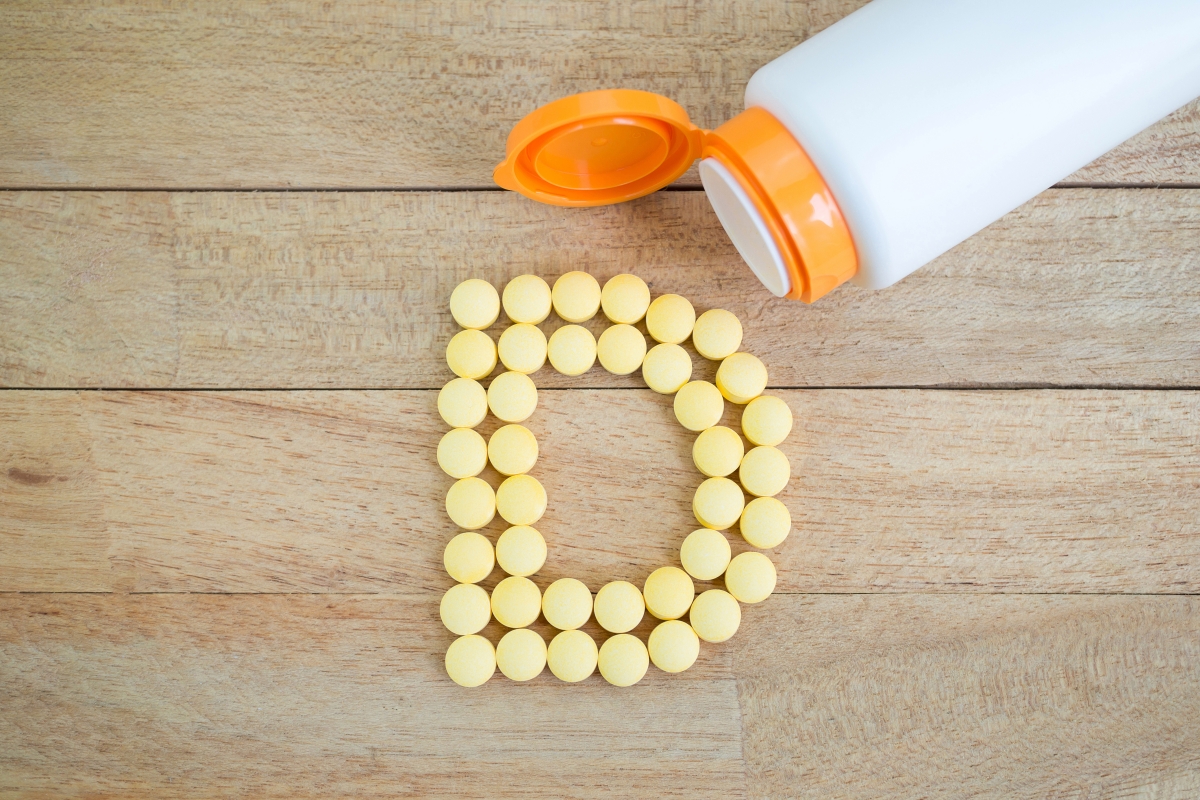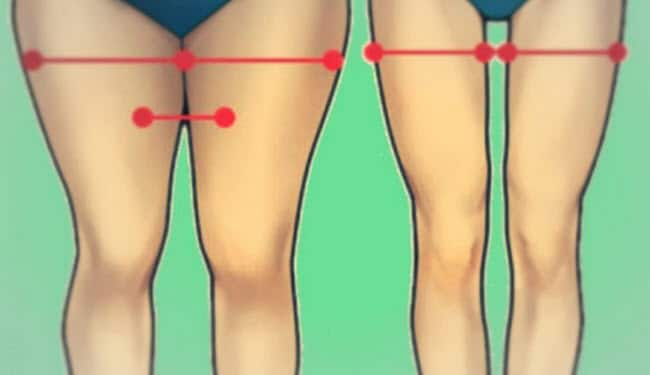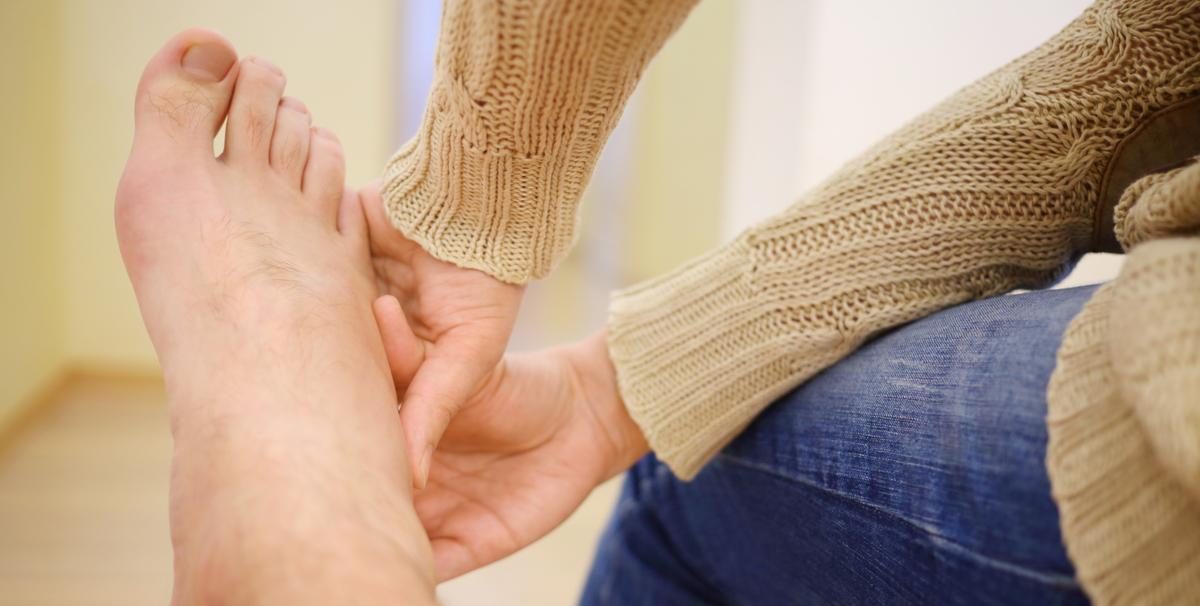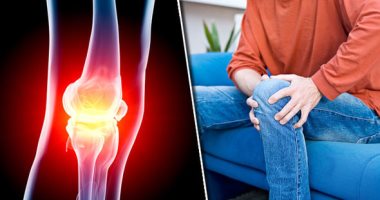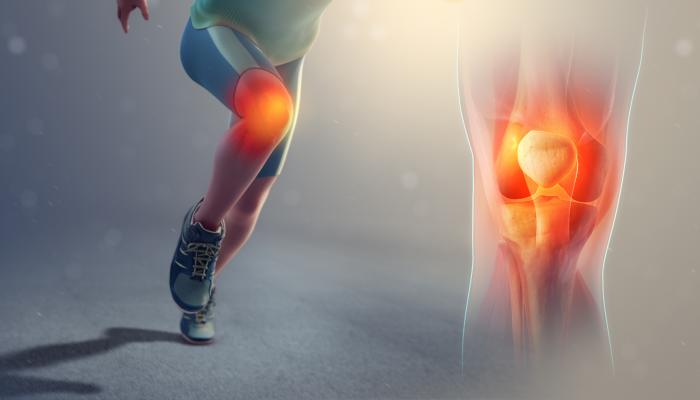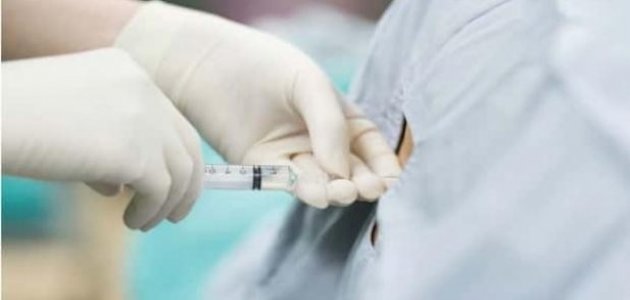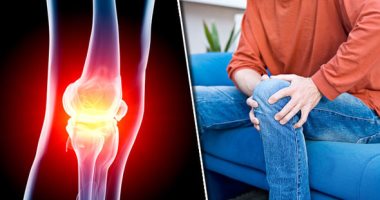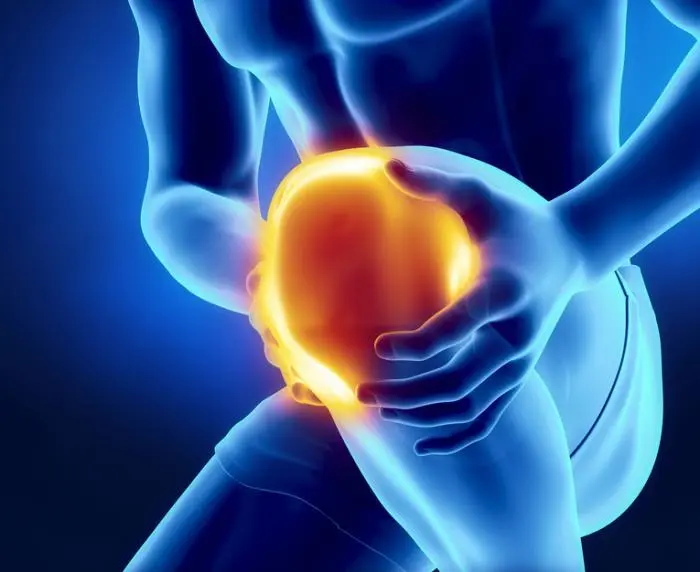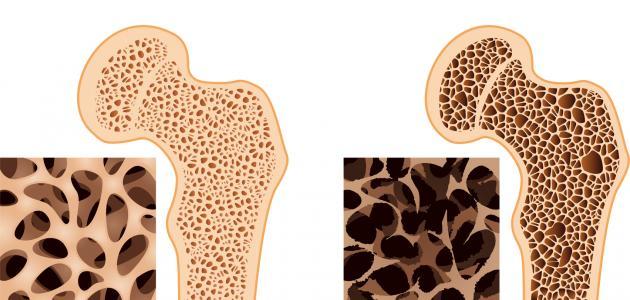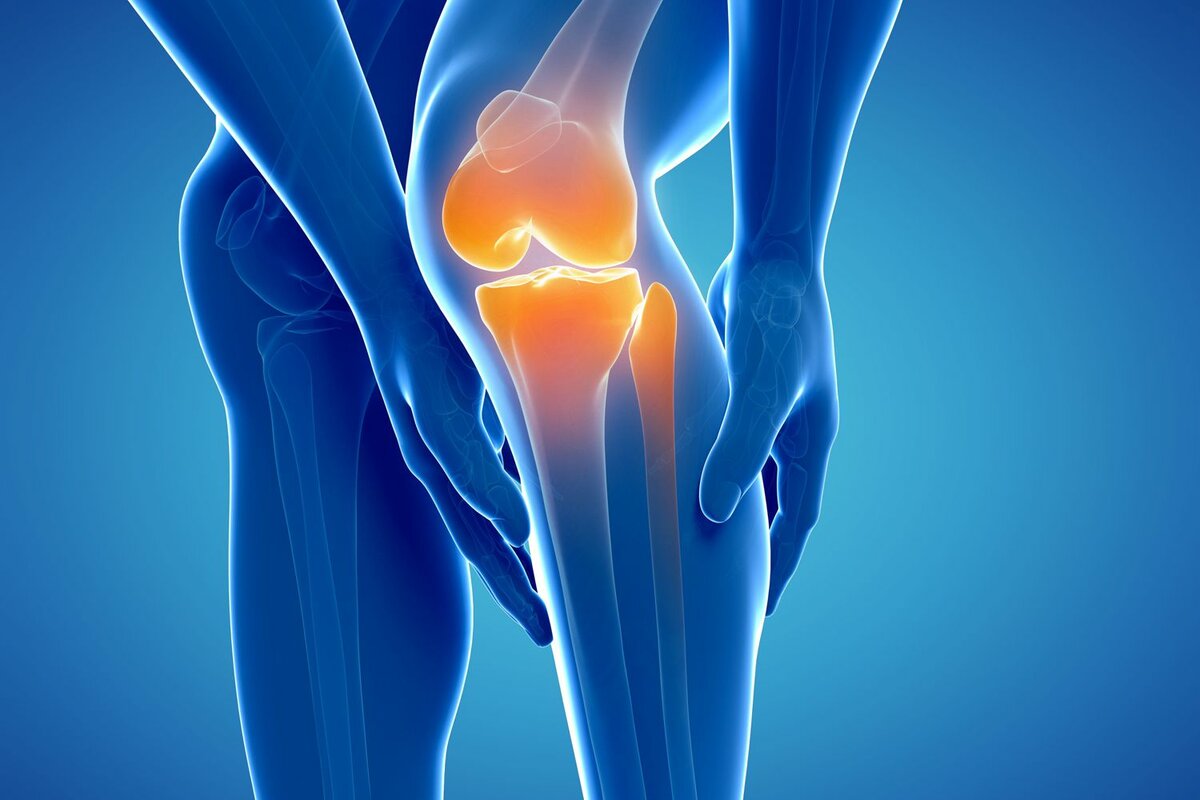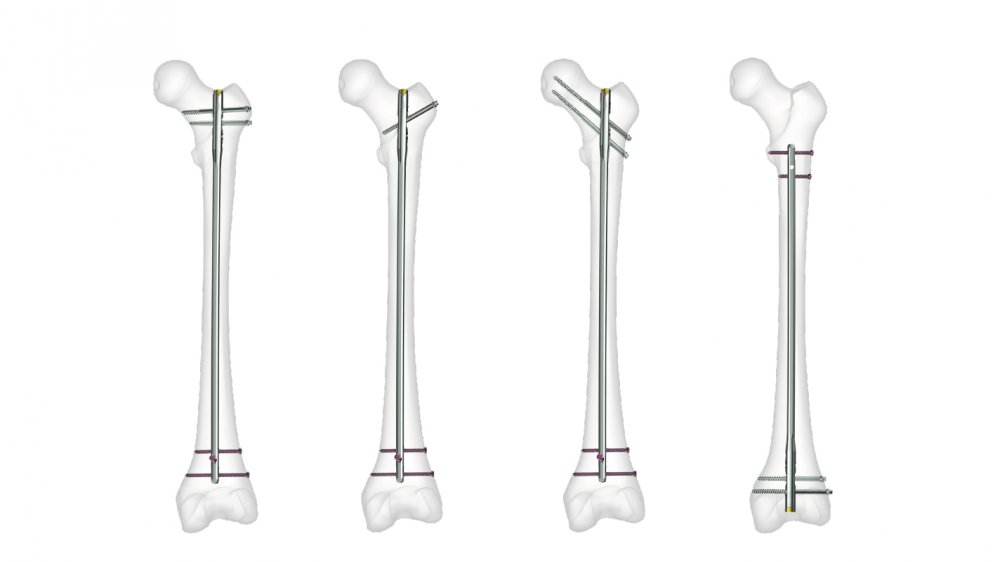What you do not know about joints roughness
Joint roughness is one of the things that the individual suffers from with age inevitably, so there is no escape from it, as it is a result of the excessive use of joints over many years, but this does not mean that it is limited to the elderly only, as it may affect the individual at any stage of his life as a result of many factors, follow the following article with us to get acquainted with more clear information regarding this topic.
Joint stiffness
Joint roughness is referred to as a bone inflammation that affects the joints and is known as osteoarthritis, and this is a health problem that has a significant negative impact on the joints of the body and this causes pain whenever the affected joint is moved, in the normal situation, the joint is covered with a cartilaginous layer whose primary task is to protect the bones from any damage that may occur to them.
This is in addition to that this cartilaginous layer helps the joint to move with great ease and prevents its friction, and when the individual suffers from joint roughness, the cartilage begins to decompose and be more tender, and this makes the bones without any protection, and this causes them to rub and reduces the ability of the joint to move freely, and this results in severe infections that cause the individual to feel pain.
Joint roughness can affect many areas of the human body, such as the jaw, shoulders, arm, wrist, or ankle, and this is in the absence of any injuries in those joints or the surrounding areas, and this affects the following areas:
- Fingers: A state of inflation may occur in the joints of the fingers at the beginning of this disease, after which it becomes severely stiff and painful, and the individual suffers from weakness in the joints.
- Spine: This may result in a defect in the spinal cylinders between the bones along the spine, and this leads to stiffness in the back and neck areas.
When the doctor diagnoses an individual with osteoarthritis in its early stages, the doctor advises him to take anti-inflammatory drugs to reduce the swelling that affects the joints, in addition to taking some medications that help protect the cartilage and prevent its erosion, and the individual needs time in treatment according to the extent of his condition deteriorating, and during that period he must listen to the doctor’s instructions and perform the exercises that he determines for him and prevent some activities that may make his condition worse.
How to diagnose osteoarthritis
In order to be able to prescribe a good and effective treatment for osteoarthritis, the doctor must first identify the main reason behind this occurrence to focus on the problem itself, and this is done by conducting some tests, and the doctor performs the following:
- Doing a physical examination to identify the symptoms that appear on the individual and what the joint stiffness has reached.
- After that, the doctor requests an examination using x-rays, which helps to identify whether there are any bone fractures or joint degeneration.
- Performing a computed tomography scan, through which images are taken from multiple angles and combined to obtain comprehensive images of several sectors of the internal structural structure of the body, also works to diagnose bone problems and hidden fractures.
- Ultrasound is used to take a set of images that show the soft tissue structures to detect any problems within them.
- Obtaining images through the use of magnetic resonance imaging to take three-dimensional images, and this examination helps to identify if there is any damage in soft tissues such as ligaments, cartilage, tendons, and muscles.
Causes of joint stiffness
Many people wonder about what is the cause of joint roughness? In order to be able to avoid this from happening as much as possible, we will get to know a clear answer to this question in the following lines:
- Advance age, which makes the individual more susceptible to osteoarthritis, due to frequent use over many years, which makes them more vulnerable.
- Suffering from obesity without interest in losing weight, as this causes increased pressure on the joints, as in the hips and knees.
- Exposure to a serious injury to the joint, such as that which occurs during the practice of some sports, which increases the risk of developing osteoarthritis.
- Practicing a certain profession that requires a high physical effort that causes great pressure on the joints and the consumption of cartilage of a particular joint in an exaggerated way, such as work that requires standing for a long time or repetitive bending and carrying heavy weights, and this makes the individual more susceptible to osteoarthritis.
- Suffering from muscle weakness causes the individual to suffer from an inability to balance and imbalance in movement, which causes cartilage erosion and results in joint stiffness.
- The presence of deformities in the bones as a result of genes and hereditary factors increases the risk of an individual developing osteoarthritis.
- Having a bone disease that greatly affects bone health, such as osteoporosis, rheumatism, and rheumatoid arthritis.
- Genetic predisposition in some individuals makes them susceptible to osteoarthritis and reduces the body’s ability to produce collagen, which may make osteoarthritis an individual suffers from at an early age.
- Bone and joint disorders such as rheumatoid arthritis and hemochromatosis.
How to prevent joint stiffness
- Regular exercises strengthen the muscles surrounding the joint and do some light activities such as walking.
- Be careful not to stay seated all day so that the muscles do not become weak.
- The individual should be keen on exposure to the sun daily for a sufficient period so that his body can obtain the natural percentage of vitamin D that is beneficial for bone health.
- Focusing on sports that strengthen the muscles surrounding the joint, strengthen bones, improve the body’s ability to balance, and burn excess calories to ensure proper weight is maintained.
- The need to do warm-up exercises before starting any sport to prevent any injury.
- Ensure that the individual has a diet that contains an abundant amount of vitamins and minerals important for his health, such as calcium, phosphorus, zinc, magnesium, iron, copper, and potassium, and this is done by eating dairy products and seafood.
- Drink plenty of water daily to prevent dehydration and keep the body hydrated.
- Use some types of creams and analgesics that help reduce pain and swelling resulting from the roughness of the knee and joints.
What are the symptoms of joint roughness?
When an individual suffers from roughness in the joints, the symptoms that begin to appear on him vary in severity according to the extent of the development of his condition, and examples of symptoms that appear on the patient:
- Suffering from stiffness and stiffness in the joints, especially in the joints of the hips, knees, and lower back.
- Loss of ability to move the joint in its normal range.
- Osteoarthritis may be affected by a tear in the meniscus cartilage.
- A crackling sound from the joints when moving or bending.
- Feeling severe pain when doing the simplest activities such as climbing stairs.
- Inability to sit for a long period in some positions such as squatting due to severe pain.
- The presence of visible swelling and swelling around the joint that may have been injured.
- Exacerbation of the intensity of pain felt by the individual when doing any activity or even during periods of rest.
- A sensation of severe pain in certain areas such as the thigh, buttocks, and knee.
- The feeling of friction between the knee joints during movement.
- Swelling and redness of the fingers, and the appearance of swelling in the ankle or toes.
Treatment of joint roughness
Joint roughness there is nothing that can be treated definitively, but some methods are followed to control the symptoms and prevent their serious exacerbation, and examples of the methods through which this is done:
- Medication therapy: This method of treatment uses some medications that work to control the severity of infections and pain that the individual feels, and the doctor is consulted about medications that are appropriate for the individual’s condition according to the diagnosis he undergoes.
- Physiotherapy: Osteoarthritis results in weakness in the muscles that are present around the joint, which causes cartilage to erode faster and exposes joints to greater damage, and for this reason, physiotherapy is important to perform a set of exercises that relieve pressure on the joint and strengthen the muscles surrounding it.
- Surgery: In difficult cases of joint roughness, for which other treatment methods do not work, the doctor resorts to a surgical solution, and it may be necessary to completely change the joint and replace it with an artificial one to get rid of the problem permanently.
Can joint stiffness be cured?
Joint roughness is inevitable because it affects the individual with age as a result of excessive use of the joint, but the individual can follow some habits and methods that help reduce the incidence of it as much as possible, and in cases where it is already infected, the treatment focuses on calming the severity of symptoms and preventing their serious development, in addition to controlling the intensity of pain and infections that may affect the individual.
Many methods are used in treatment, such as doing physiotherapy exercises that help strengthen the muscles that surround the joint, in addition to focusing on losing excess weight to reduce the pressure on the joint.
Treating joint roughness with herbs
Many herbs have many therapeutic properties that are used in the treatment of osteoarthritis and work to reduce side effects and alleviate the associated symptoms, and examples of herbs that are used in treatment:
- Chamomile: Chamomile relieves pain by calming the nerves and relieving pressure on them.
- Mustard: Mustard oil has many benefits in treating many diseases, especially pain in the knee area, and this helps to improve blood flow in the veins around the knee and reduce pain.
- Ginger oil: It is used warmly on the affected area and permanently eliminates the pain associated with roughness.
- Olive oil: It is used to massage the affected area to relieve the pain associated with roughness because it contains antioxidants.
- Celery: It contains luteolin, which is very beneficial because it has anti-inflammatory properties, and this makes it useful in reducing joint pain and treating inflammation.
- Lemon juice: Citric acid found in lemon reduces uric acid in the body, which results in severe pain.
- Eucalyptus oil: It is considered one of the essential oils that have a cooling effect and contribute significantly to alleviating the pain in the muscles and joints and relieving muscular tension on the joints.
Treating joint roughness with olive oil
Olive oil is used to treat joint roughness because it contains many therapeutic properties, in addition to the fact that olive oil contains many benefits, such as:
- The use of virgin olive oil as a paint with a major role in relieving pain and inflammation that afflicts individuals as a result of their suffering from osteoporosis in the knee area, and studies have confirmed that its effect is largely similar to non-steroidal anti-inflammatory drugs.
- It is also possible to use olive oil on the knee area with some light massage movements, as this helps to relieve pain and stiffness that is located in that area because olive oil contains substances that carry anti-inflammatory properties, and massage helps to enhance blood circulation in the area, which speeds up the process. healing.
- Putting olive oil in foods and salads helps to alleviate the symptoms of arthritis (Arthritis), and its benefits are not limited to eating it only, but using it as a cream gives effective results as well. This is because it contains many properties that are antioxidant and anti-inflammatory, and olive oil works It inhibits some enzymes that are responsible for inflammation in the body, and this is similar to the effect of ibuprofen.
Injection treatment of joint stiffness
Doctors may resort to treating joint stiffness by using some injections, and among the types that doctors resort to:
Plasma injection therapy
Plasma injection is one of the modern methods that are used in the treatment of many diseases because there are studies indicating that the plasma contains growth factors, and when injecting the plasma into the joint affected by roughness, the growth factors help to repair damaged tissues, and this is effective in treating roughness, and the method of treatment by plasma injection is characterized by many things, including:
- It can be used more than once.
- It is safe for the individual and does not produce any side effects.
- The individual improves quickly after using these injections.
- It treats damaged tissues in the joint and its role is not limited to relieving pain only.
Cortisone injection therapy
The use of cortisone injections directly in the affected joint has very good results in treatment, and cortisone injections have many advantages, such as:
- It is very safe.
- Its side effects are mild and rarely occur.
- It does not make the individual need to perform a joint replacement through an operation and delays that stage.
Plasma treatment of joint roughness
The method of treating joint roughness using plasma is very effective and yields good results for the patient, this is because it works to repair the tissues in the affected joint, and the treatment using plasma is safe and does not cause any side effects behind it, and the patient is in a state of clear improvement during the first weeks in which the injection is given, and it is possible to inject the plasma more than once, provided that it is under the supervision of a specialized doctor.
Laser treatment of joint roughness
One of the recent technologies that have been reached and which is very effective in treating joint roughness is laser treatment, where a beam that is 100 times stronger than the brightness of the sun is used to treat arthritis and does not make the need for surgical intervention, and the laser is inserted into a vein in the patient’s arm and there is a belief that it accelerates blood flow throughout the body.
This in turn leads to an improvement in the transfer of important elements to the individual such as food and oxygen, and this works to repair damaged tissues in the affected joints, and the laser beam works to stimulate the release of stem cells, which are very important as they help in the formation of new tissues.
Joint stiffness in young people
Osteoarthritis, which is common among young people, is defined as a disease that affects the joints and results in erosion of the cartilage that is present between the bones, which is used to prevent them from rubbing with each other. When the bones start to rub against each other, this causes the cartilage to erode, and this results in a feeling of pain and stiffness in the joints and facing great difficulty in movement, and the symptoms get worse over time, and many reasons lead to this happening, including:
- The individual’s following an unhealthy lifestyle in which he does not move much.
- Sitting for long periods in incorrect positions.
- Carrying heavy weights and doing wrong postures while doing so.
- Suffering from obesity, which increases the pressure on the joints.
- Diseases such as diabetes.
- Continuing to sit at desks for an extended period.
- Exposure to some injuries that negatively affect the joints.
- Having a family history of this disease is transmitted to the individual through genes.
When a young person gets roughness in the joints, he initially faces great difficulty in performing daily activities normally as he used to do in the past, in addition to that it hinders young athletes from practicing their favorite hobbies, and the individual faces great difficulty in many things, even if it is sitting for a while. And the roughness of joints in young people is treated by following the following methods.
Natural therapy
Many methods are followed in the treatment of joint roughness through physical therapy, and for example:
- Cold therapy: Doing cold compresses on the affected joint in the event of severe inflammation reduces blood flow to it, which reduces the severity of the inflammation in it.
- Heat therapy: Heat helps improve blood circulation in the area of the injury, which prevents stiffness and speeds up its recovery.
- Hydrotherapy: This method of treatment is used to relieve the symptoms of osteoarthritis, and it is exercises that are done in warm water to relieve pain and severity of symptoms.
- Muscle strengthening exercises: The specialist doctor prescribes a set of exercises that strengthen the muscles surrounding the affected joint, such as leg muscle exercises that strengthen the knee joint and reduce the symptoms that appear on it.
- Flexibility exercises: The joint with roughness is moved with great difficulty, and for this, the individual must focus on flexibility exercises that work to restore the joint to its movement again, and it must be done regularly according to the doctor’s instructions.
Lifestyle change
Young people may develop osteoarthritis as a result of bad habits that they persevere in, such as smoking or health problems such as being overweight, so the young man must change his wrong lifestyle and follow a beneficial diet that also helps him lose excess weight, in addition to preventing some habits such as smoking, drinking alcohol, and others.
Medication treatment
The doctor may prescribe some medications that relieve the pain felt by the individual as a result of roughness in the joints, and some medications may be used that control the severity of symptoms and prevent their serious development.
The best treatment for joint roughness
Many people wonder about what is the treatment of roughness? And the answer to that question is that the specialist doctor alone can determine it well by knowing the main cause behind the incidence of joint roughness and focusing on treating the problem from its roots, many factors increase the chance of developing osteoarthritis, such as suffering from obesity, sitting in wrong positions, or not exercising regularly.
The main reason that the doctor will identify by doing the necessary examinations, he will start prescribing the best treatment for joint roughness and the most appropriate for the individual’s condition, and some cases are severely deteriorating and require surgical intervention or alternatives to it, such as thermal frequency operations, which are considered one of the best and safest methods used in treating knee roughness at present.
Can joint stiffness be cured?
The individual can’t recover from the roughness of the joints completely, but the treatment methods that are followed focus on alleviating the severity of the symptoms that the individual feels and preventing their dangerous development over time. The doctor may prescribe a group of drugs whose effect is so good, or he may follow other methods, such as advising the patient to lose excess weight, exercise regularly, and focus on exercises to strengthen the muscles that surround the joint.
What is the difference between arthritis and osteoarthritis?
Arthritis and joint stiffness are considered one side of the same coin, because their symptoms are very similar, as both are associated with swelling, pain, redness, and arthritis, and these symptoms hinder the individual from performing his daily activities in a good way, and one of them may be the cause of the other, meaning that the individual may initially suffer from osteoarthritis, and then arthritis, and vice versa.
But each of them differs in the method of treatment from the other, and for this, it is better to differentiate between them well to be able to take appropriate treatment to solve a case, and the specialized doctor can recognize the difference between them through examinations and diagnosis of the individual’s condition well, and then he can prescribe the optimal treatment for any of the two cases.
Knee roughness
Knee roughness is a must because it is a symptom that accompanies advanced age as a result of excessive use of joints over many years, and this condition must be medically intervened to treat it immediately to prevent an increase in the severity of symptoms and control their development and complications because neglecting them is very dangerous It may make the individual suffer from many problems.
Knee roughness treatment
There are many methods recommended by the specialist doctor to treat knee roughness, and he determines the most appropriate ones according to the extent of the development of the individual’s condition and the symptoms he feels, for example:
Knee roughness treatment with oils
Treating knee roughness using oils is one of the methods that have been inherited between generations since ancient times and have a very good effect in treatment, in addition to the fact that it does not cost the individual much and is available in many homes, and many oils are used in treatment, such as lavender oil, ginger oil, orange oil, turmeric, basil, eucalyptus, and so on.
Many people mix a little olive oil equally with one of the previous oils or two types at the same time and warm them well over the fire, after which the knee joint is well massaged with this mixture by making some circular movements quietly and without pressure on the joint, and it is best to conduct a sensitivity test for this mixture on a small part of the skin before using it.
Knee roughness treatment herbal
Many herbs are very effective in treating knee roughness, such as:
- Willow bark: The extract of this herb is extracted and taken by drinking, and it has a great role in reducing inflammation and knee and joint pain, and it must be ensured before drinking it that you do not suffer from any problems in the digestive system, and it is not recommended for diabetics, liver patients, and those who use blood thinners.
- Ginger: Ginger is a spice that is used on many foods and drinks because it contains many beneficial therapeutic properties, and it is effective in relieving swelling and pain that an individual suffers from in the knee joint.
- Turmeric: It contains curcumin, which has many anti-inflammatory properties and works to reduce the symptoms of knee roughness, in addition to reducing the symptoms of osteoarthritis.
- Cinnamon: It is used in many things in the home and has a wide range of uses, in addition to its therapeutic properties that make it very useful to get rid of the symptoms of knee roughness.
Knee roughness treatment with honey
Honey is considered one of the very famous and versatile anti-inflammatories among many individuals because it contains a large group of vitamins in addition to antioxidants and infections, and it is possible to treat knee roughness with honey by making cinnamon syrup with warm honey and drinking it daily, and this is continued until the pain and swelling subside, and it is also possible to mix honey with water and grease the knee with it well.
Symptoms of knee roughness
- Feeling pain in the knee, especially when moving it or trying to bend it.
- Having great difficulty going up and down stairs.
- A popping sound from the joints during movement.
- Knee joint swelling and inflammation.
- Deformity in the shape of the knee joint and the occurrence of warp.
- Stiffness and consistency of the knee joint so that the individual is not able to bend it.
Symptoms of knee roughness in young people
- A sensation of severe pain when trying to move the joints.
- Poor mobility and joint loss of flexibility.
- Feeling pain when putting pressure on the joints.
- Suffering from joint stiffness, especially after long periods of rest.
- Swelling of joints due to severe inflammation.
- A crackling sound during movement.
- Hard lumps on the joint.
Causes of knee roughness
- Knee injuries.
- Having rheumatoid arthritis.
- Osteoarthritis.
- Lupus.
- Gout.
- Bursitis.
- bone cancer

